The relationship between medical devices and sensors is widely recognized and highly essential. Accurate, reliable, and fast-responding sensors are vital in all areas of medicine, but nowhere more so than in critical care.
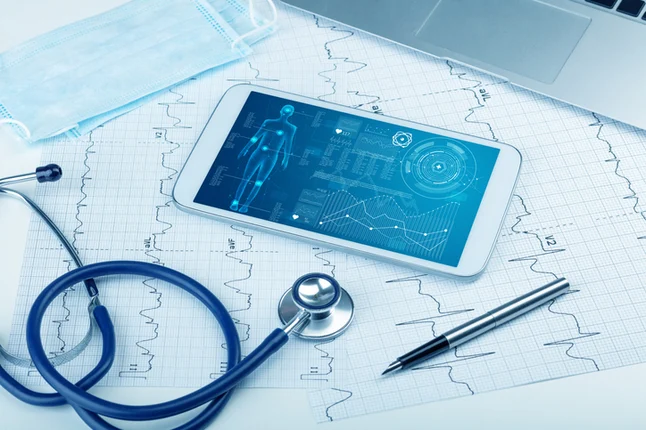
Image Credit: Amphenol Sensors
Sensor technology is often used in urgent scenarios where nothing can be left to chance, and where sensors’ response time and precision are key to a patient’s condition. Caregivers should be able to trust that sensors will never compromise a device’s performance or delay decisions.
Medical sensors do some of the most important work in patient care, despite being among the smallest components of many medical devices. Modern standards of patient care would be impossible without the performance and data provided by medical sensors.
A medical device is only as good as the technology powering it, and medical sensors, particularly those custom-made for a specific application, must meet benchmarks for precision, efficacy, and safety.
Key Patient Care Metrics: Pressure and Temperature
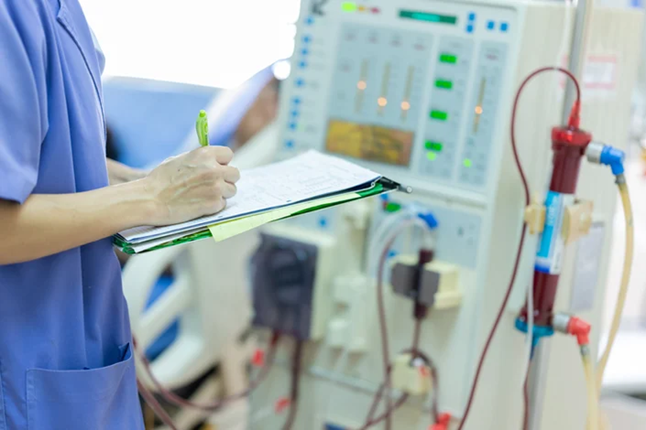
Image Credit: Amphenol Sensors
In critical care settings, the smallest details in a patient’s condition are often the biggest indicators of a potential issue.
Monitoring temperature and pressure is central to keeping patients stable and ensuring treatments are delivered effectively. These metrics are often the most important means of recognizing and addressing larger, more complicated medical issues.
Pressure is an indicator of a patient’s level of wellness in several cardiovascular or respiratory conditions, and monitoring pressure during surgical procedures or certain treatments helps to improve patient safety and treatment efficacy.
A shift in body temperature is often the first warning of a more serious condition, such as the onset of infection. Keeping temperatures consistent in laser ablation procedures, dialysis, and other applications is also key to delivering effective treatments and improving patient outcomes.
Pressure and Temperature Sensor Applications
Positive outcomes depend on precise monitoring, with pressure and temperature sensors supplying the data needed to keep patients stable and guide care decisions.
Both sensor types are widely used in critical care applications.
Pressure Sensors
Pressure sensors work in various media and devices, often in procedures and equipment where delicacy is essential. These include:
- Ventilators
- Catheters
- Ablation machines
- Surgical assemblies
- Dialysis machines
Temperature Sensors
Temperature sensors are among the most important components in critical care medical devices, seeing widespread use in applications from patient monitors to ventilators, including:
- Cardiac care
- Dialysis
- Skin surface monitoring
- Respiratory care
- Thermometry
How Temperature Sensors Are Reshaping Surgery
Traditional surgeries historically relied on incisions with scalpels and sutures to close the wound, but over the past few decades, laser technology has changed how surgeries are performed and their effects on patients.
Surgical lasers now enable minimally invasive procedures with reduced recovery times and reduced risk of complications.
The concentrated beam of light generated by a laser produces intense heat of up to 1000 °C that the human body cannot withstand unchecked and extended exposure to. Even brief exposure to these temperatures can be life-threatening to both the patient and the medical professional using the laser surgical device.
Temperature sensors make laser surgery a safe and viable option. This sensor type enables the precise monitoring of temperatures to ensure these remain within safe thresholds, whether during laser ablation in cancer treatment or an endarterectomy.
The body temperature medical devices employed in laser-assisted surgeries generally fall into two categories: contact and non-contact, each representing a variety of temperature sensor types.
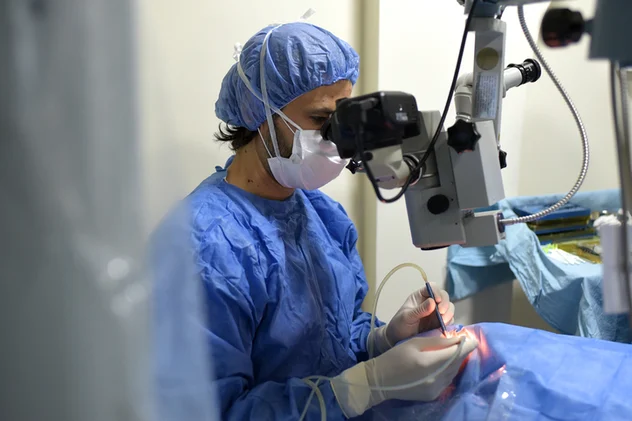
Image Credit: Amphenol Sensors
Contact Temperature Sensors
Thermistors
This type of resistor can exhibit a large and predictable change in resistance in response to temperature changes. Due to their sensitivity to even small changes in temperature, thermocouples are often employed in temperature measurement and control circuits, though they can be susceptible to self-heating effects.
Thermocouples
These temperature sensors are comprised of two wires of different metals welded together at the sensing end. Exposing this junction to a temperature differential produces a voltage proportional to the temperature difference. Thermocouples are widely used in high-temperature applications due to their durability and accuracy.
Resistance Temperature Detectors (RTDs)
These sensors are comprised of a metal wire (typically platinum) that changes resistance as its temperature changes. RTDs are highly accurate and stable over time, but tend to be slower to respond to changes in temperature versus thermocouples and thermistors.
Non-Contact Temperature Sensors
Infrared Temperature Sensors
These sensors leverage infrared light to measure an object’s or surface’s temperature without making direct contact. Infrared temperature sensors work by detecting the thermal radiation emitted by an object or surface and converting this radiation into an electrical signal.
Fiber Optic Temperature Sensors
These sensors work by monitoring changes in their fiber optic cable’s physical properties as temperature changes. This fiber optic cable is generally coated with a material that changes its refractive index as temperature changes, altering the way that light is transmitted through the fiber.
It is possible to measure this change in light transmission to determine temperature. Fiber optic medical temperature sensors are regularly used in harsh environments due to their immunity to electromagnetic interference.
Custom Sensors Versus Off-the-Shelf Sensors
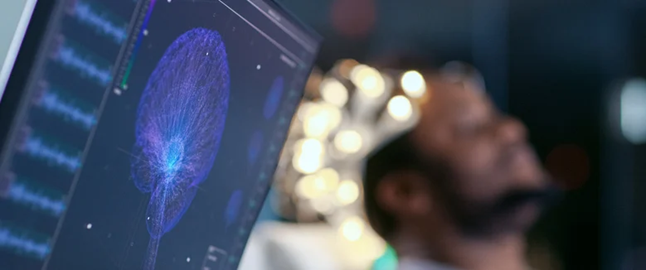
Image Credit: Amphenol Sensors
When it comes to medical device and sensor selection, there are essentially two choices: an off-the-shelf sensor or a custom-made one.
Off-the-shelf sensors are an immediately available one-size-fits-all option designed to measure a certain metric. Off-the-shelf sensors see widespread use in a range of more general applications.
There is a notable difference between a product meant for general use versus one designed for a specific application, however, and this is especially true with sensors.
A custom-designed sensor for a medical device will be able to accommodate the rigors of application while featuring the right size and housing for the setting it will be used in. A sensor is designed for a specific medical device, and its function is always the more ideal option.
Custom Medical Sensor Design Considerations
There are some universal design considerations that sensor manufacturers must consider as medical device and sensor technology is initially conceptualized, regardless of a sensor’s function or application.
Defining Environmental Requirements
The first step is to define the environmental conditions a sensor must endure, from temperature and pressure to other stresses. This consideration also includes any materials the sensor will be in direct contact with within its housing.
Material Selection
Defined environmental requirements will lead manufacturers to assess different materials in order to identify those that can withstand the specified conditions. It may also be important to select materials able to accommodate repeated sterilizations.
Material Testing and Validation
With potential materials identified, the manufacturer must employ material testing and validation processes in order to ensure the materials’ suitability for the intended application.
This may involve subjecting materials to specific environmental stressors like humidity exposure, temperature cycling, or mechanical stress in order to evaluate their performance and stability under certain environmental conditions.
Size, Shape, and Housing
The manufacturer must incorporate relevant design features in order to protect the sensor from its operating environment, including protective enclosures, sealing mechanisms, shock-absorbing structures, and insulation layers. In the case of reusable devices, the sensor’s design must also consider ease of cleaning, sterilization, and maintenance.
Device Validation and Testing
Custom sensors undergo rigorous testing to confirm they can meet the environmental demands of their intended use. This typically includes performance testing under simulated environmental conditions, such as humidity and temperature chambers, mechanical stress testing, and exposure to chemicals.
The sensors are evaluated for reliability, accuracy, and durability when subjected to these conditions, allowing manufacturers to confirm that sensors can withstand their intended environment.
Compliance and Certification
The manufacturer must ensure that custom sensors comply with relevant standards and regulations, depending on the specific application and regulatory requirements. For example, the manufacturer may obtain certifications or approvals from regulatory bodies in order to validate the sensor's safety and effectiveness.
Designing Medical Devices and Sensors for Their Environments
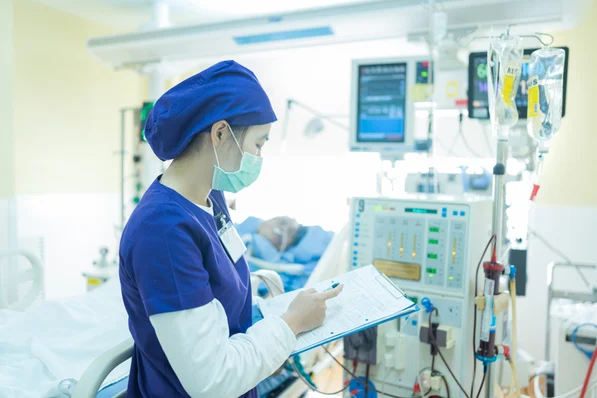
Image Credit: Amphenol Sensors
Medical devices and their sensors must function in some of the most challenging environments, with potential exposure to harsh chemicals, sudden changes in the medium, and rapid temperature shifts. Functioning in such dynamic environments can affect sensor devices:
- Overall performance
- Longevity
- Accuracy
- Reliability
A sensor manufacturer must create sensors that are accurate and robust in these challenging environments. Sensor designs must, therefore:
- Recognize the diverse array of environmental factors the sensor may face
- Maintain precision for the device's entire useful life
When considering medical device and sensor design for specific operating environment(s), sensor manufacturers must consider:
- Temperature, including the temperature range the sensor operated in and the frequency and severity of any anticipated temperature changes.
- Pressure, including the intensity of pressure in the environment the sensor will operate in, whether external pressures will change, and the required degree of accuracy for pressure measurements.
- Chemicals and fluids, including any chemicals or fluids the sensor will be exposed to, and any cleaners used to sterilize the device or equipment it is installed in.
- Electrical interference and noise, including the severity of any electrical interference the device may be exposed to, and what kind of compensation the sensor has for accuracy when this occurs.
- Physical stress, including whether the device will be subjected to shock or vibration while installed in a medical device, how intense these mechanical stresses will be, and how they can be mitigated.
- Humidity, including any potential humidity ranges in which the sensor will operate, and whether external conditions will change frequently or remain fairly consistent.
- Space constraints, including how large a space the medical sensor will be operating in, whether there is room for the sensor itself, or whether the sensor needs to be miniaturized to accommodate any space constraints.
Custom Miniature Sensors and Critical Care
Medical devices continue to become smaller and more sophisticated, with huge advances in miniaturization over the past 20 years. This also applies to the sensor technology they use.
Medical devices and custom sensors used in critical care are becoming smaller for a range of reasons, beyond current design trends.
Rapid Advances in Medical Technology
Medical care devices are becoming more compact and sophisticated, driving the need for smaller sensors. Not all medical devices are the same, however, and sensors often require a level of specific design that off-the-shelf alternatives cannot offer.
Increasing Demand for Personalized Patient Care
Patient care has always been personalized to a degree, but new technology and treatment methodologies are enabling doctors and physicians to provide care that is more individualized to the patient than ever before, continually improving outcomes.
Real-Time Monitoring
The more precise the data available to clinicians, the better the care they can provide. Even small changes in a patient's condition can have major consequences in a critical care setting, so understanding these changes as they occur can make a huge difference in the provision of effective treatment.
Real-time monitoring is especially important in:
- Respiratory monitors
- Blood pressure monitors
- Temperature monitoring devices
- Intercranial monitors
- Cardiac monitors
Design Challenges for Smaller Sensors
Designing a custom miniature sensor for critical care is a complex challenge. For example, this requires much more than taking an existing sensor’s design and scaling down its dimensions.
Not all OEM sensor manufacturers have the expertise and experience to design smaller. From a technical perspective, developing a smaller sensor means designing it so there is virtually no difference from its standard-sized counterparts (apart from size) and no compromise in accuracy, reliability, or lifespan.
It is also important to note that not all custom miniature sensors are developed for brand-new medical devices, with the miniature sensor often retrofitted to accommodate the needs of an existing application.
This kind of integration requires an even higher level of design work to accommodate unforgiving tolerances. For example, adding a new custom pressure sensor to a device is not as simple as removing the old component and inserting the new one. Pressure sensors have their own unique footprint in a device, meaning that a custom medical instrument’s design and development must accommodate this, regardless of its size.
Custom miniature sensors must also meet regulatory compliance measures for both performance and safety, and these standards are even more strict for critical care applications. Even one part of a device not meeting standards will render the whole device out of compliance.
Critical Care in the Field
As well as getting smaller, medical devices and sensors are also becoming more mobile, with patient treatment no longer tethered to a single physical location.
Medical devices such as respiratory monitors, heart rate monitors, and dialysis machines are now available for field care, must deliver readings that are both accurate and dependable.
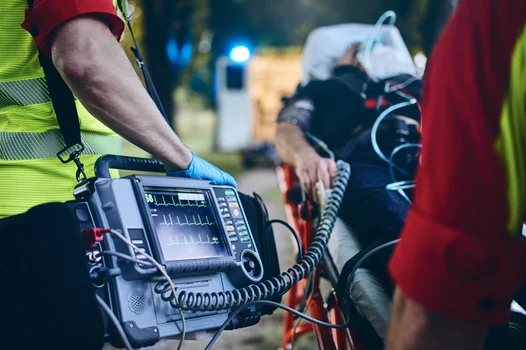
Image Credit: Amphenol Sensors
Improved Vital Sign Monitoring
Mobile medical devices featuring integrated sensor technology enable continuous monitoring of vital signs throughout the duration of treatment, regardless of location. This allows caregivers to identify and respond to immediate changes in a patient’s:
- Heart rate
- Respiratory rate
- Blood pressure
- Oxygen saturation levels
Enhanced Communication Between EMS
Data collected on a patient's condition by first responders with emergency medical devices offers a real-time window into the patient's condition and care needs.
Patient data collected in emergency transport was historically presented to receiving medical personnel when the patient arrived at the ER, but the combination of advanced sensors and smart technology now allows that information to be collected while travelling to an ER and transmitted to care providers waiting at the hospital for the patient. This means that information on the patient’s condition arrives before EMS is even on the property.
Reliable Remote Patient Monitoring
Sensors integrated into wearable devices, medical equipment, and other healthcare devices enable real-time monitoring of patients' health conditions, with data transmitted to healthcare providers who can use it to diagnose and treat patients remotely.
This data enables healthcare providers to continuously monitor patients at a distance, allowing patients to go about their daily lives while wearing a device that automatically collects data on their activity levels, vital signs, and other important metrics.
Using sensors in remote care allows providers to spot early changes in a patient’s condition and act before it worsens, improving outcomes. This proactive approach to care is key to reducing the risk of complications and preventing hospitalizations.
Acknowledgments
Produced from materials originally authored by Amphenol Sensors.

This information has been sourced, reviewed and adapted from materials provided by Amphenol Sensors.
For more information on this source, please visit Amphenol Sensors.